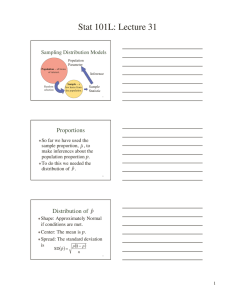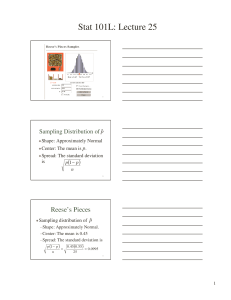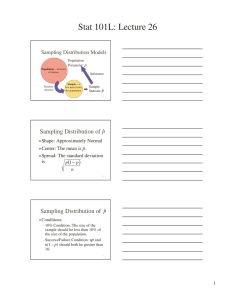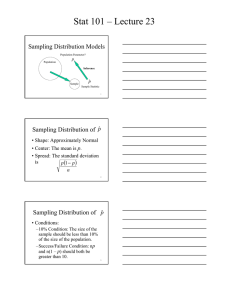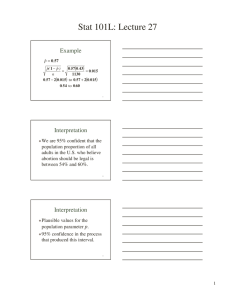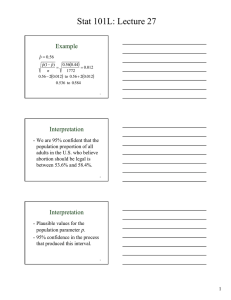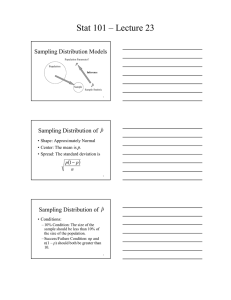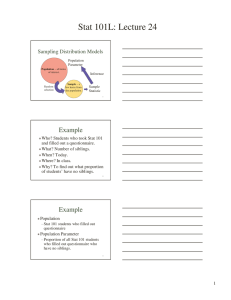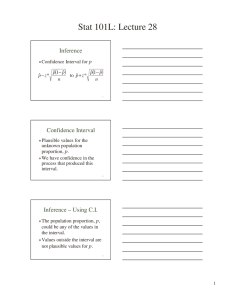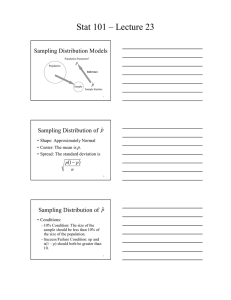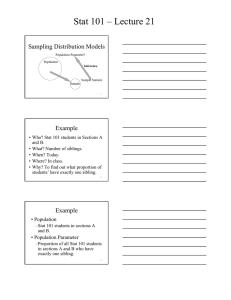Stat 101L: Lecture 26 Sampling Distribution of
advertisement
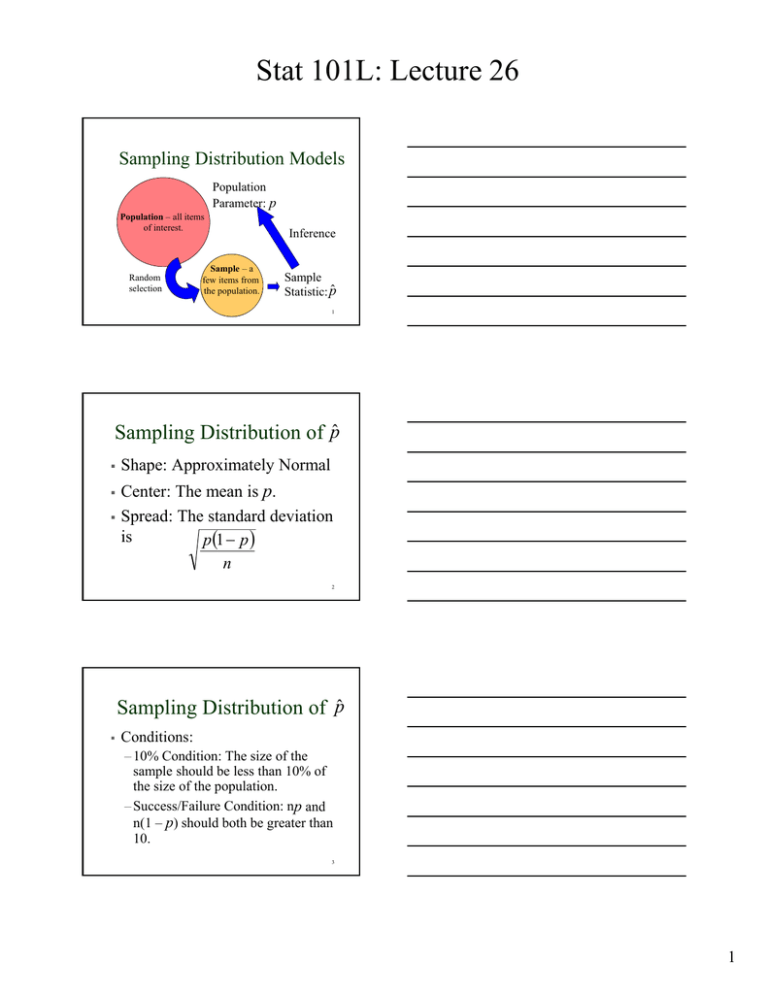
Stat 101L: Lecture 26 Sampling Distribution Models Population Parameter: p Population – all items of interest. Random selection Sample – a few items from the population. Inference Sample Statistic: p̂ 1 Sampling Distribution of p̂ Shape: Approximately Normal Center: The mean is p. Spread: The standard deviation is p 1 p n 2 Sampling Distribution of p̂ Conditions: – 10% Condition: The size of the sample should be less than 10% of the size of the population. – Success/Failure Condition: np and n(1 – p) should both be greater than 10. 3 1 Stat 101L: Lecture 26 68 – 95 – 99.7 Rule p 3 pq n p2 pq n p pq n p p 1 pq n p2 pq n p3 pq n 4 Probability If the population proportion, p, is known, we can find the probability or chance that p̂ takes on certain values using a normal model. 5 Inference In practice the population parameter, p, is not known and we would like to use a sample to tell us something about p. Use the sample proportion, p̂ , to make inferences about the population proportion p. 6 2 Stat 101L: Lecture 26 Example Population: All adults in the U.S. Parameter: Proportion of all adults in the U.S. who feel that abortion should be legal. Unknown! 7 Example Sample: 1,772 randomly selected registered voters nationwide. Quinnipiac University Poll, Jan. 30 – Feb. 4, 2013. Statistic: 992 of the 1,772 adults in the sample (56%) answered that abortion should be legal. 8 68-95-99.7 Rule 95% of the time the sample proportion, p̂ , will be between p 2 p(1 p) p(1 p) and p 2 n n 9 3 Stat 101L: Lecture 26 68-95-99.7 Rule 95% of the time the sample proportion, p̂ , will be within p(1 p) n two standard deviations of p. 2 10 Standard Deviation Because p, the population proportion is not known, the standard deviation SD( pˆ ) p(1 p) n is also unknown. 11 Standard Error Substitute p̂ as our estimate (best guess) of p. The standard error of p̂ is: SE ( pˆ ) pˆ (1 pˆ ) n 12 4 Stat 101L: Lecture 26 About 95% of the time the sample proportion, p̂ , will be within pˆ (1 pˆ ) n two standard errors of p. 2SE( pˆ ) 2 13 About 95% of the time the sample proportion, p, will be within pˆ (1 pˆ ) n two standard errors of p̂ . 2SE ( pˆ ) 2 14 Confidence Interval for p We are 95% confident that p will fall between pˆ 2 pˆ (1 pˆ ) pˆ (1 pˆ ) and pˆ 2 n n 15 5
